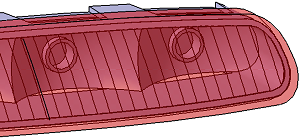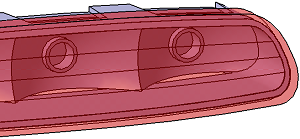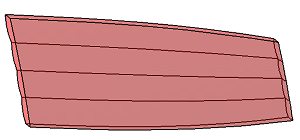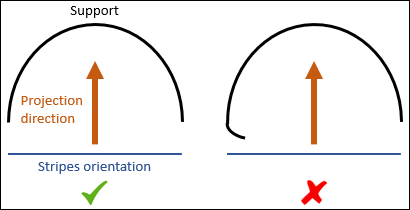Stripes
The grid allows you to determine the lens' distribution onto the support.
Style curves define the stripes on the optical lens.
The shape of the stripes, their number and their repartition over the support depend on the style curves selected for definition.
 |
 |
| Lens with vertical stripes | Lens with horizontal stripes |
Axis System
The grid axis system is used to define the way that the style curves are projected onto the support.
The axis system origin is optional. It is, by default, inherited from the source.
Note: If you define manually one axis only, the other axis is
automatically (and randomly) calculated by Speos in the 3D view. However, the other axis in the
Definition panel may not correspond to the axis in the 3D view. Please refer to the axis in the 3D
view.
Note: This axis system has an impact on some parameters of the flutes beams:
- Start angle/End angle.
- Flutes' concavity/convexity.
 |
 |
| Support and style curves viewed from the plane normal to Projection direction (Z axis) | Result of the feature when stripes are generated on the support according to style curves definition. |
When using a curved support, use a support that does not close in on itself (see figure below). Otherwise, the stripes will not be projected correctly.
 |
|
| Support ensuring good construction | Incorrect curved support |
Definition
Styles curves are selected to demarcate the stripes.
These curves can be lines, splines or sketches. The stripes curves are not necessarily continuous in tangency.
Note:
- An incomplete style curve is enough to provoke a null result for the whole feature.
- To avoid construction issues, always use support surfaces larger than style curves.
- Stripes do not work with large curve length variation. To limit the size of the last stripes, we recommend you to cut the support.


